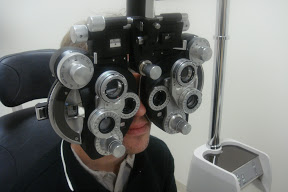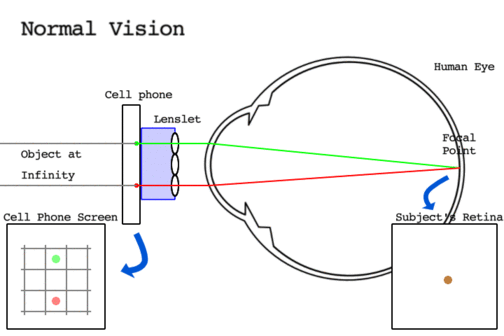Smartphone Vision Test
 Computing photography specialist Ramesh Raskar from the Massachusetts Institute of Technology has developed a unique smartphone application that uses interactive 3D graphics to accurately determine the number of diopters for each eye. The program works so simply that it is even surprising why no one had come up with this before and made a revolution in ophthalmology, which is still forced to diagnose deviations from normal with expensive equipment, such as in the photo. Now everything will change.
Computing photography specialist Ramesh Raskar from the Massachusetts Institute of Technology has developed a unique smartphone application that uses interactive 3D graphics to accurately determine the number of diopters for each eye. The program works so simply that it is even surprising why no one had come up with this before and made a revolution in ophthalmology, which is still forced to diagnose deviations from normal with expensive equipment, such as in the photo. Now everything will change. Raskar's development called Near-to-Eye Tool for Refractive Assessment (NETRA)renders a 3D picture on the smartphone screen, not just for two eyes, as usual, but for one. The picture consists of two parallel lines located at such a distance from each other that with a normally focused lens of the eye they merge into one line. If a person’s vision differs from the norm, then using the buttons of the smartphone he brings the lines closer until they merge. From a distance, it is calculated how much diopter vision differs from the norm.

For the program to work, a plastic peephole with lenses (lenslet in the diagram) is connected to the smartphone, through which you need to look at the screen. The cost of the module is about two dollars, which is about ten thousand times cheaper than the equipment used in modern optometry.
Ramesh Raskar will present the results of his work at the Siggraph conference, which will be held in Los Angeles in a month.
via New Scientist
